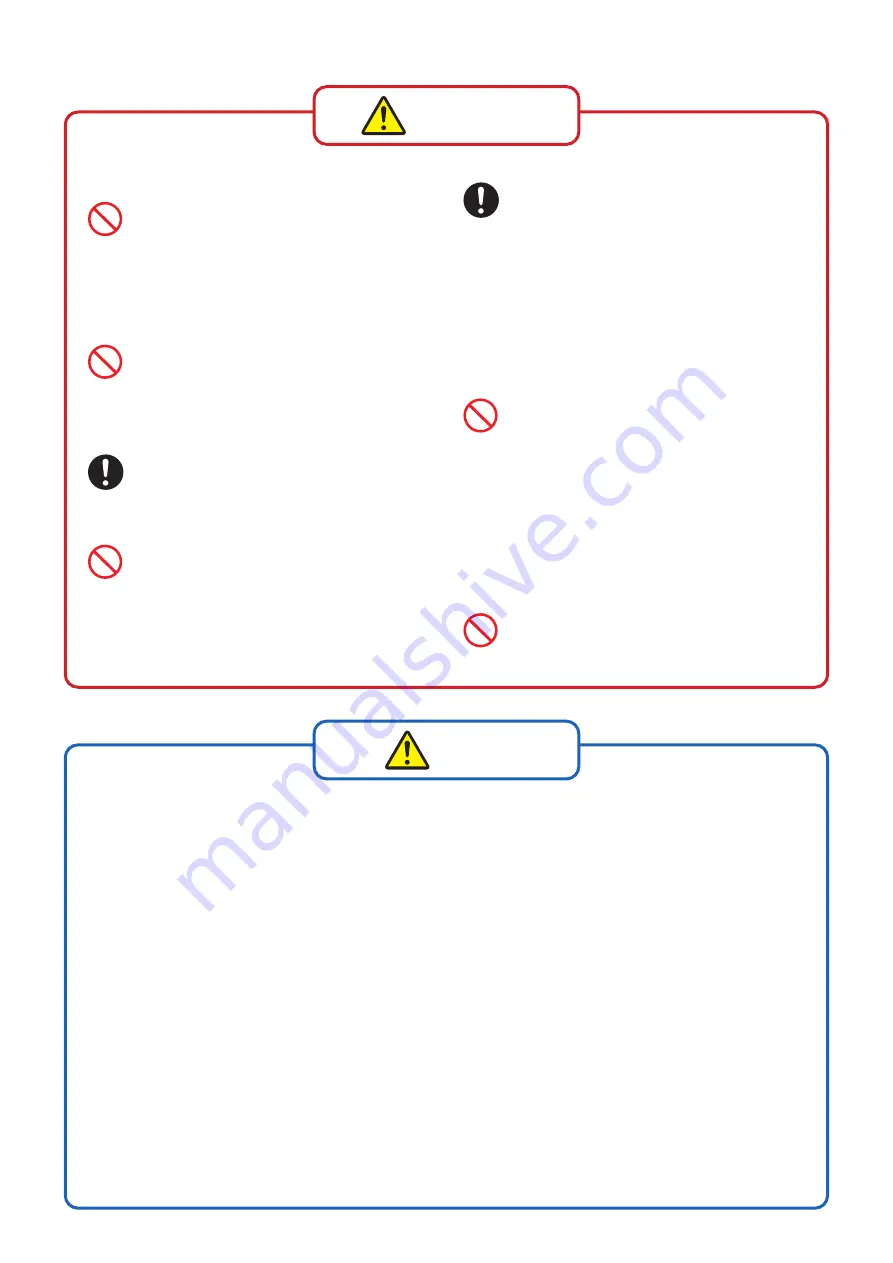
Do not damage the power cord or power
plug.
Do not damage, process, place heavy objects
on, heat, place near a source of heat, forcibly
bend, twist, or pull the power cord or plug. There
is a risk of fire or electric shock resulting from
core wire exposure, short-circuit, or breakage.
Do not use a power plug that is contami-
nated with foreign matter, such as dust.
There is a risk of fire or electric shock if the
foreign matter absorbs moisture, etc., and
causes an insulation fault.
Insert the power plug completely to the
base.
There is a risk of electric shock or fire from
heating if the power plug is inserted incompletely.
* Do not use a damaged plug or loose outlet.
Use only the specified battery.
Failure to do so could prevent the device from
operating.
<Permitted batteries>
• Nickel-metal hydride batteries (Eneloop)
• Alkaline batteries
<Prohibited batteries>
• Do not use any type of battery other than that
listed above.
Handle the battery correctly.
The battery could rupture or ignite if handled
incorrectly. If the battery fluid leaks, it could
corrode the device or contaminate hands or
clothing.
Always observe the following cautions.
・
Make sure the polarity (+ and -) is correct
when inserting the battery.
・
Remove the batteries when suspending use
for a long time.
・
Do not leave spent batteries in the device.
・
Safely dispose of spent batteries with the
designated method.
・
Do not use new and old batteries or different
types of batteries together.
・
Do not heat or disassemble the batteries or
place them in water or fire.
・
Do not put batteries together with metal items.
・
Do not use the battery if the outer sheath is
peeling.
Do not use in an environment, including
temperature, humidity, pressure, vibration,
dust, or acidic or corrosive gases, that
could adversely affect the device.
Failure to observe this could result in faults.
Caution
[Measurement atmosphere gas]
Mixed gas
The instrument is adjusted for measurements for gas mixtures of nitrogen (or argon), oxygen, and carbon dioxide. Do
not use other gas mixtures, as accurate measurement may not be possible.
[Use prohibited gases]
• Oxidizing gases
Oxidizing gases, such as sulfur dioxide and hydrogen sulfide, can cause high readings and can cause the sensor
performance to drop quickly.
• Reducing gases
Reducing gases, such as fluorine, chlorine, bromine, iodine, and ozone can cause high readings and significant
degradation of the sensor performance in a short time.
• Other obstructive gases
Hydrogen chloride and nitrogen oxide will be indicated at high levels, and hydrogen will be indicated at a low level.
In either case, the sensor performance can degrade significantly in a short time.
[Operating environment]
Static electricity
In rare cases, static electricity can cause the measured value to vary instantaneously or cause the device to stop oper-
ating. If the device operation stops, turn the power OFF and ON.
Note




































